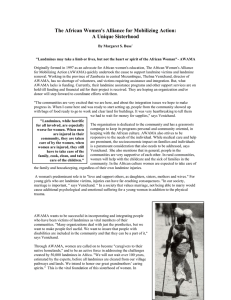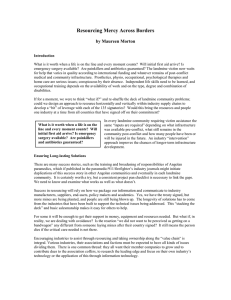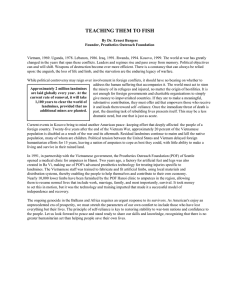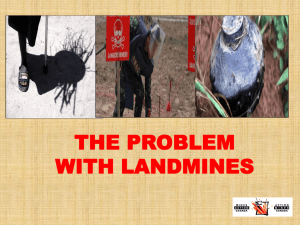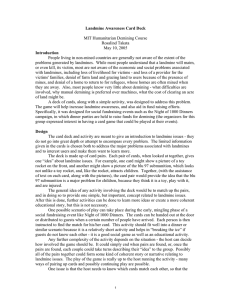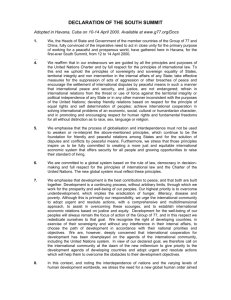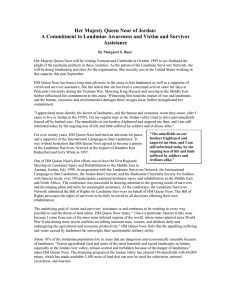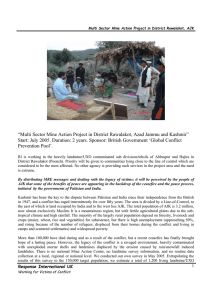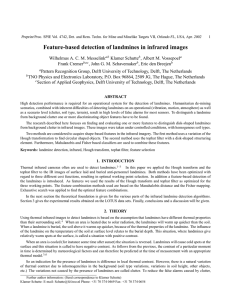Vietnam Veterans of America Foundation (VVAF)
advertisement
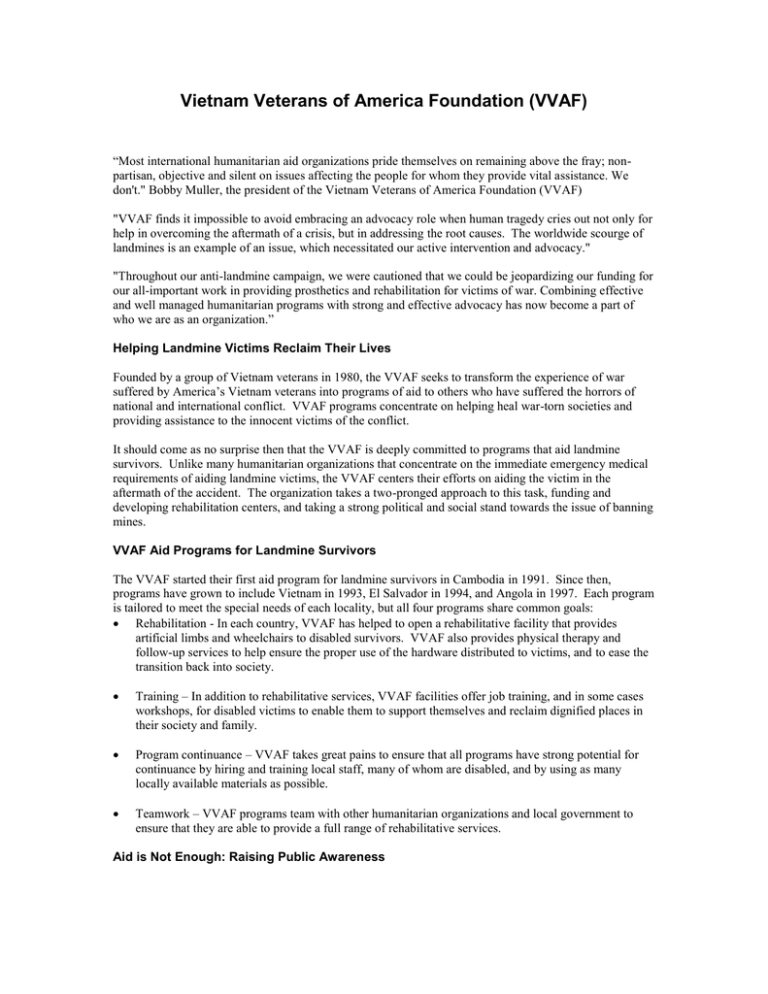
Vietnam Veterans of America Foundation (VVAF) “Most international humanitarian aid organizations pride themselves on remaining above the fray; nonpartisan, objective and silent on issues affecting the people for whom they provide vital assistance. We don't." Bobby Muller, the president of the Vietnam Veterans of America Foundation (VVAF) "VVAF finds it impossible to avoid embracing an advocacy role when human tragedy cries out not only for help in overcoming the aftermath of a crisis, but in addressing the root causes. The worldwide scourge of landmines is an example of an issue, which necessitated our active intervention and advocacy." "Throughout our anti-landmine campaign, we were cautioned that we could be jeopardizing our funding for our all-important work in providing prosthetics and rehabilitation for victims of war. Combining effective and well managed humanitarian programs with strong and effective advocacy has now become a part of who we are as an organization.” Helping Landmine Victims Reclaim Their Lives Founded by a group of Vietnam veterans in 1980, the VVAF seeks to transform the experience of war suffered by America’s Vietnam veterans into programs of aid to others who have suffered the horrors of national and international conflict. VVAF programs concentrate on helping heal war-torn societies and providing assistance to the innocent victims of the conflict. It should come as no surprise then that the VVAF is deeply committed to programs that aid landmine survivors. Unlike many humanitarian organizations that concentrate on the immediate emergency medical requirements of aiding landmine victims, the VVAF centers their efforts on aiding the victim in the aftermath of the accident. The organization takes a two-pronged approach to this task, funding and developing rehabilitation centers, and taking a strong political and social stand towards the issue of banning mines. VVAF Aid Programs for Landmine Survivors The VVAF started their first aid program for landmine survivors in Cambodia in 1991. Since then, programs have grown to include Vietnam in 1993, El Salvador in 1994, and Angola in 1997. Each program is tailored to meet the special needs of each locality, but all four programs share common goals: Rehabilitation - In each country, VVAF has helped to open a rehabilitative facility that provides artificial limbs and wheelchairs to disabled survivors. VVAF also provides physical therapy and follow-up services to help ensure the proper use of the hardware distributed to victims, and to ease the transition back into society. Training – In addition to rehabilitative services, VVAF facilities offer job training, and in some cases workshops, for disabled victims to enable them to support themselves and reclaim dignified places in their society and family. Program continuance – VVAF takes great pains to ensure that all programs have strong potential for continuance by hiring and training local staff, many of whom are disabled, and by using as many locally available materials as possible. Teamwork – VVAF programs team with other humanitarian organizations and local government to ensure that they are able to provide a full range of rehabilitative services. Aid is Not Enough: Raising Public Awareness Recognizing that all of their aid can not prevent new landmine victims, the VVAF takes a strong and outspoken position in the fight to ban landmines worldwide. In 1991, the VVAF founded the International Campaign to Ban Landmines, a campaign which compelled over 120 countries to sign the international treaty to ban landmines. The organization also serves as coordinator to the United States Campaign to Ban Landmines, a coalition of more than 300 organizations dedicated to building U.S. support for the international treaty to ban landmines. The VVAF is currently using their access to landmine areas to coordinate a global mine survey to establish the scope and depth of the landmine problem in most of the twelve most heavily mined countries. The survey, which the VVAF hopes to have completed in two to three years, will also gather data on landmine victims and the impact of mines on agriculture, commerce, and public health. To further raise public awareness, the VVAF has published two books dealing with the horror of landmines. The first, After the Guns Fall Silent: The Enduring Legacy of Landmines details not only the physical damage caused by landmines, but examines the social and economic impact of landmine problems on affected societies. The second, In Its Own Words: The U.S. Army and Antipersonnel Mines in the Korean and Vietnam Wars, examines the impact of landmines on American personnel, and how U.S. made landmines were used to devastate U.S. fighting forces during the Korean and Vietnam Wars. The Future of the VVAF With the 1998 ratification of the international treaty to ban landmines, the VVAF started the Campaign for a Landmine Free World. The new campaign will allow the VVAF to provide vital leadership in the areas of victims’ assistance, demining, and public education. As a part of this leadership role, the VVAF hopes to expand and improve its existing aid programs. And as the best leadership example of all, the VVAF vows, “As long as landmine victims require new or replacement limbs, VVAF will be there to help them.” Contact Information: Mr. Bobby Muller, President 2001 S. Street, NW Suite 740 Washington, DC 20009 USA Website: http://www.vvaf.org/
